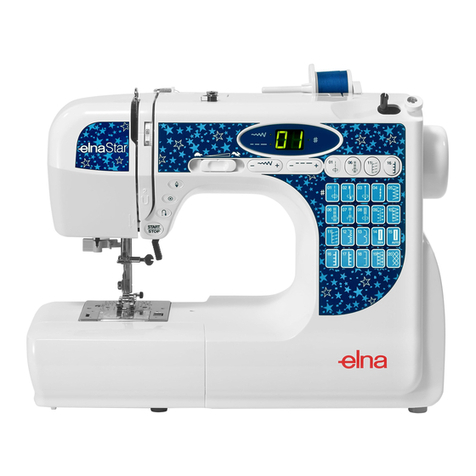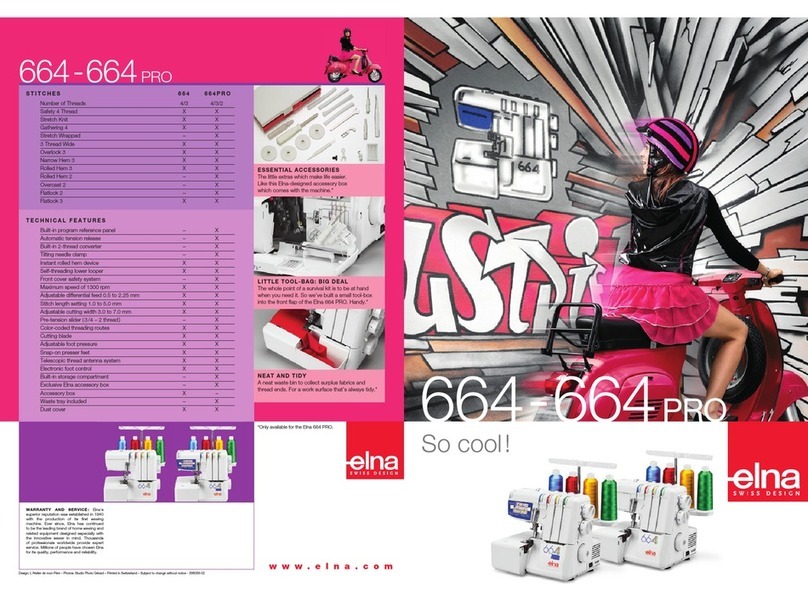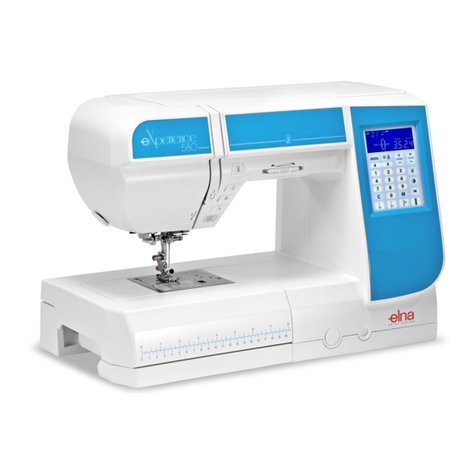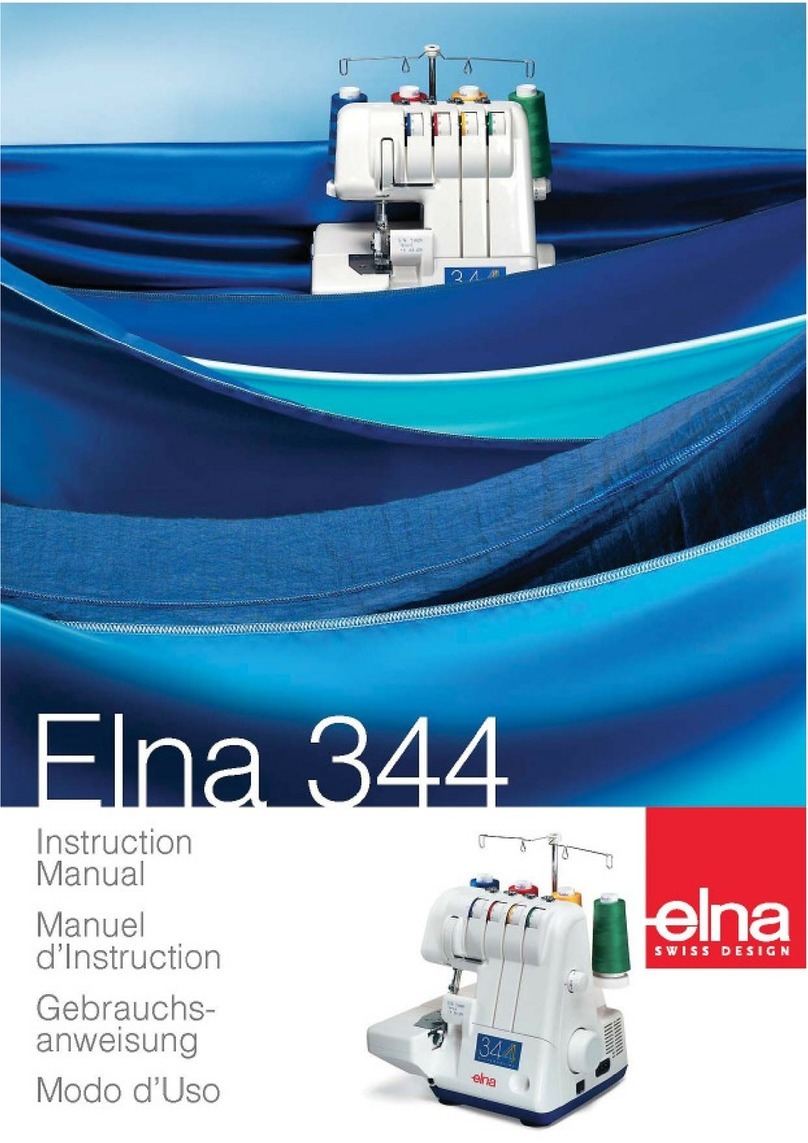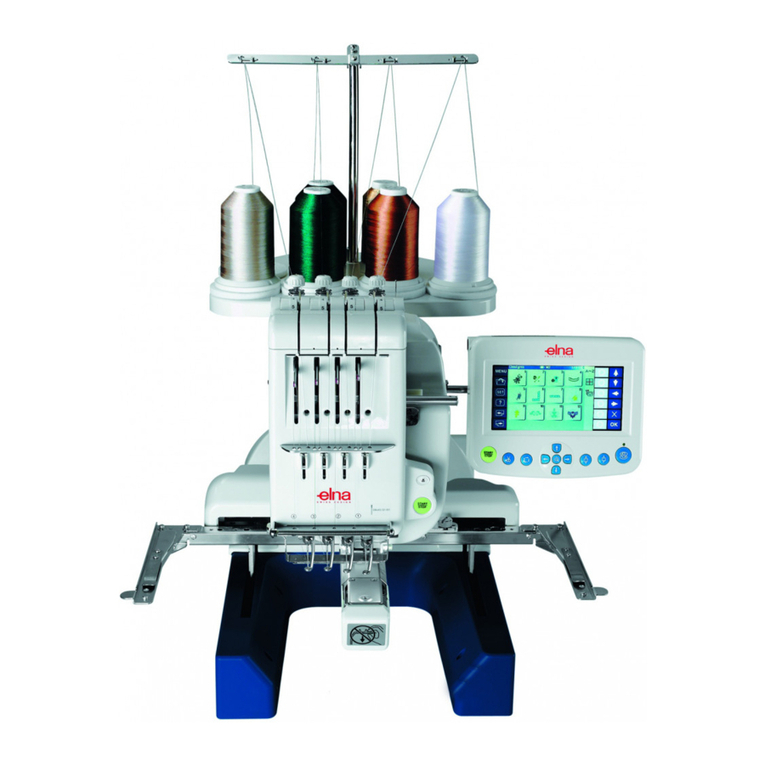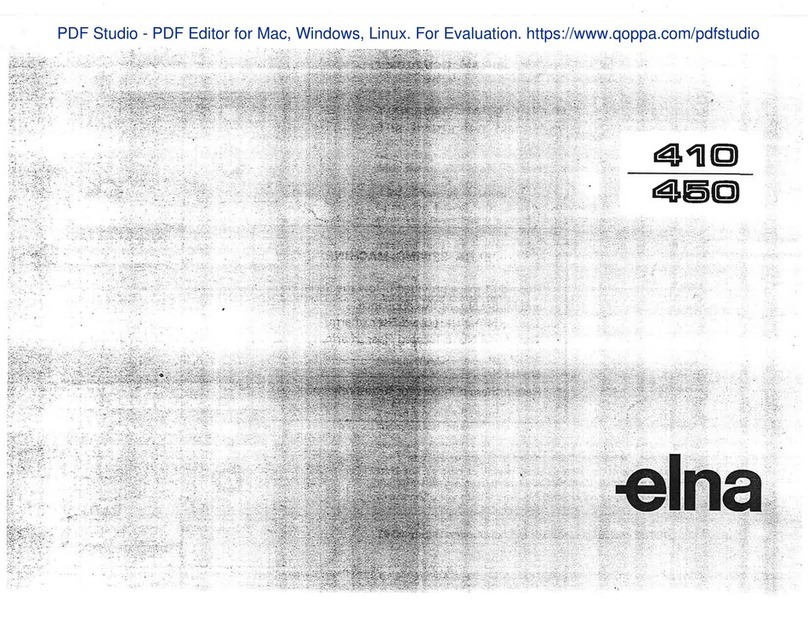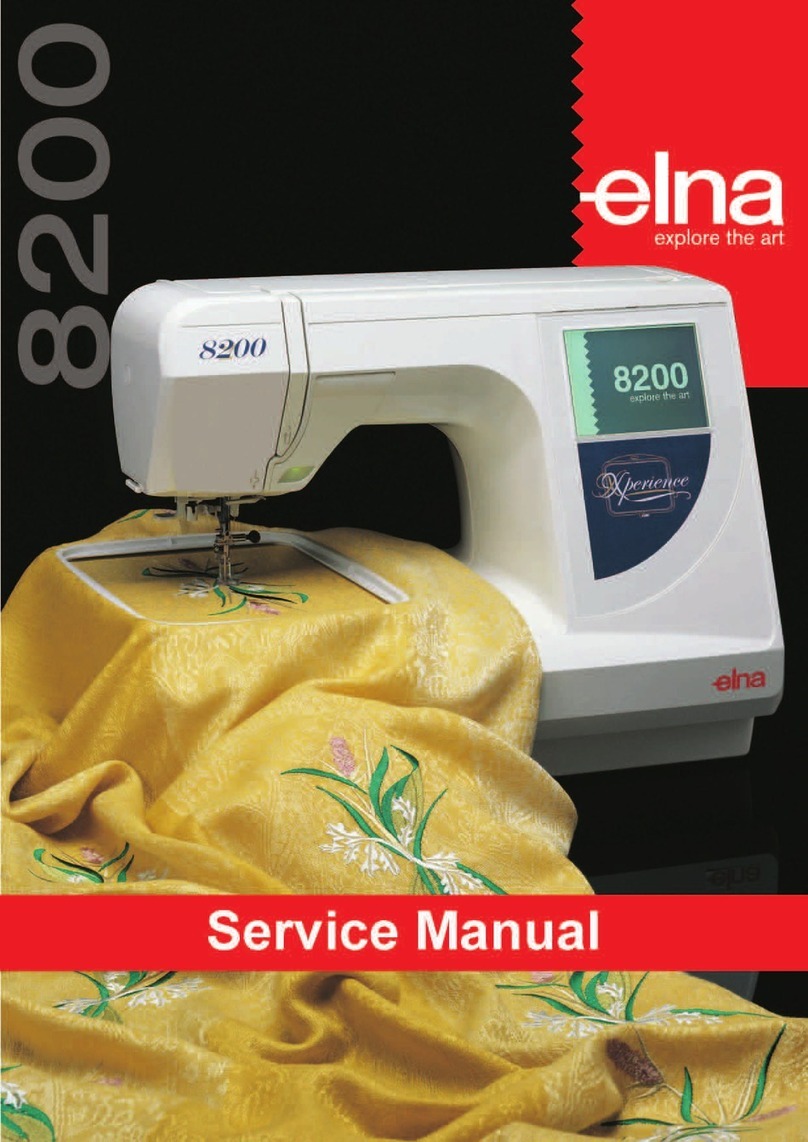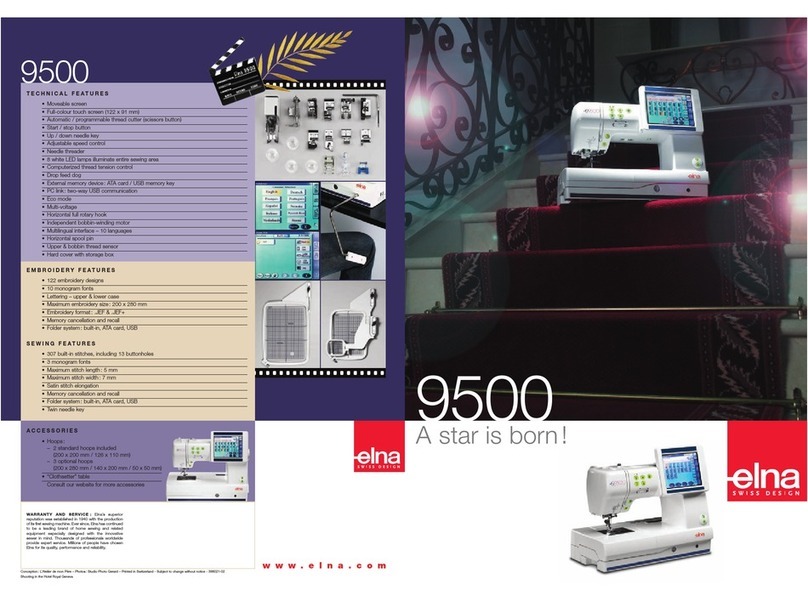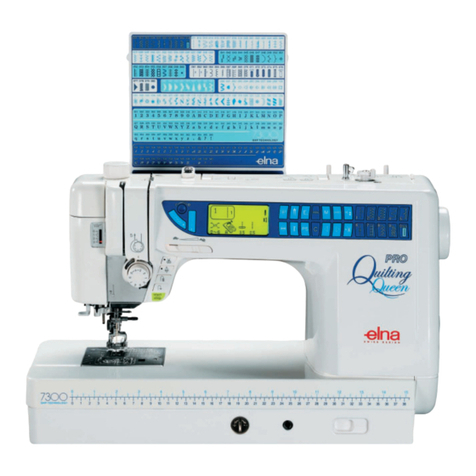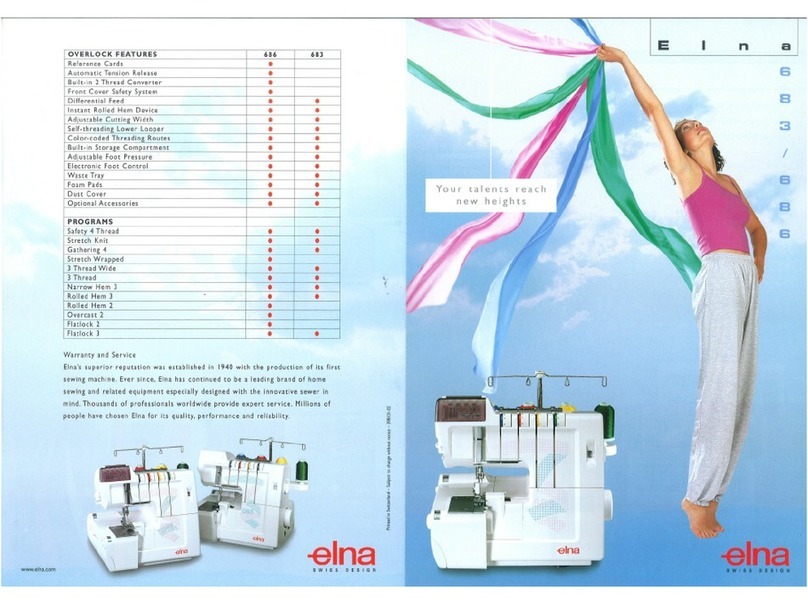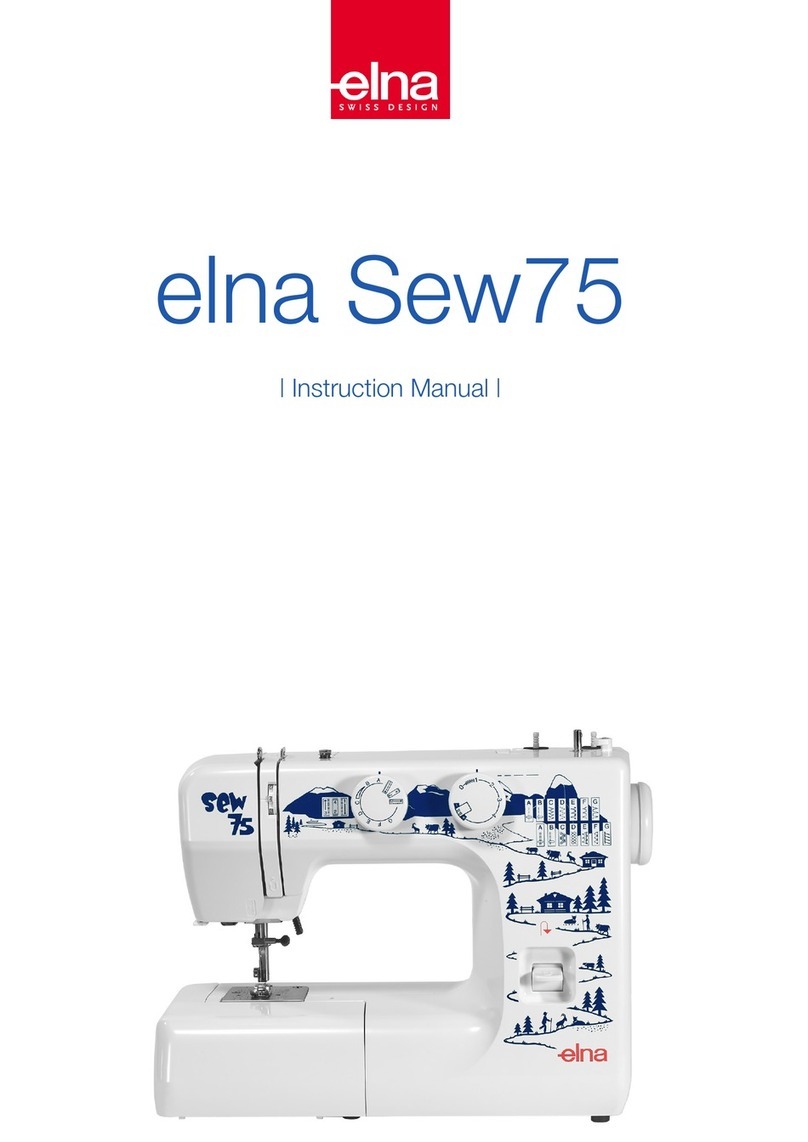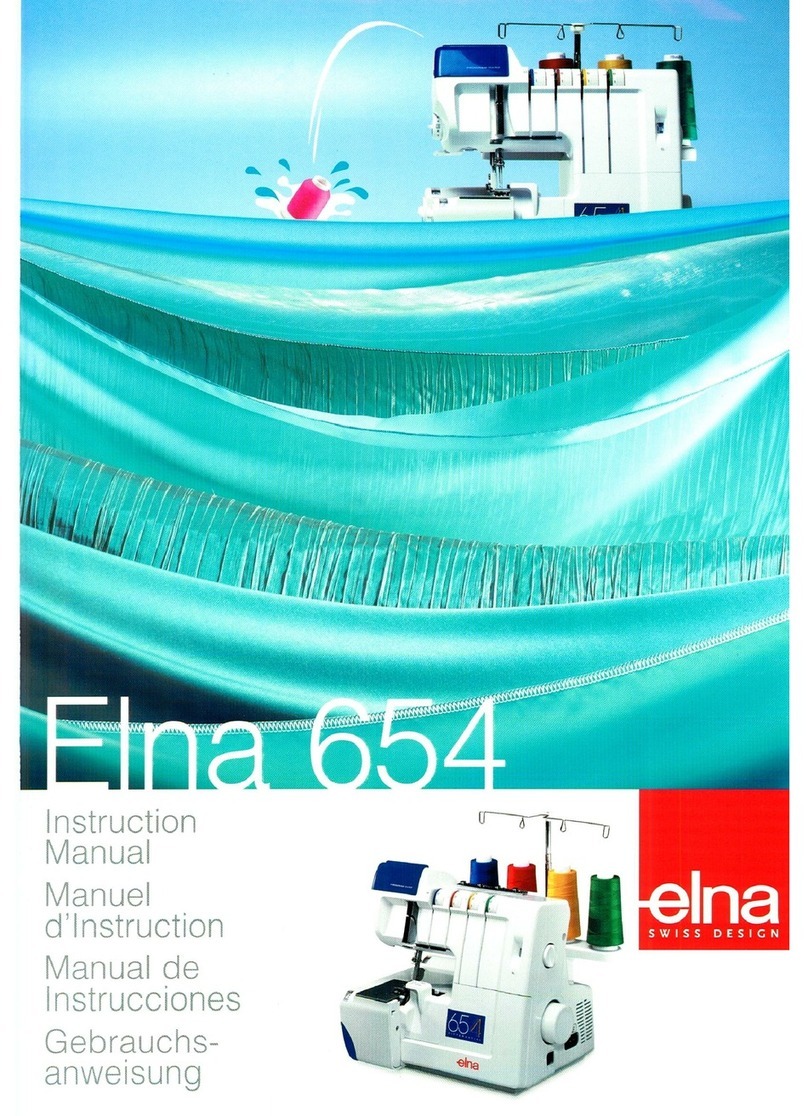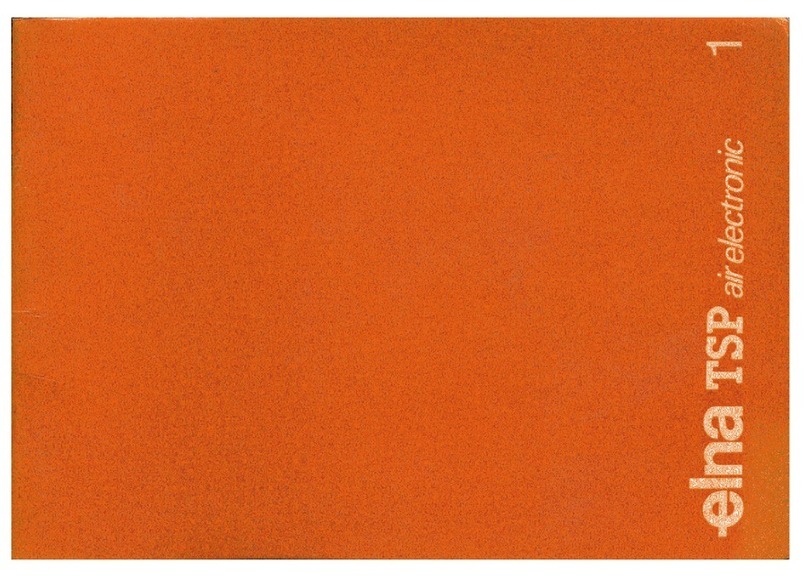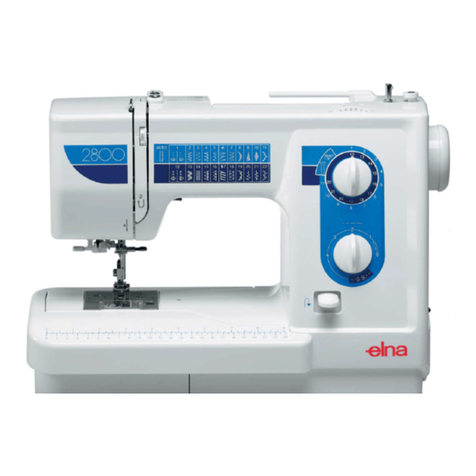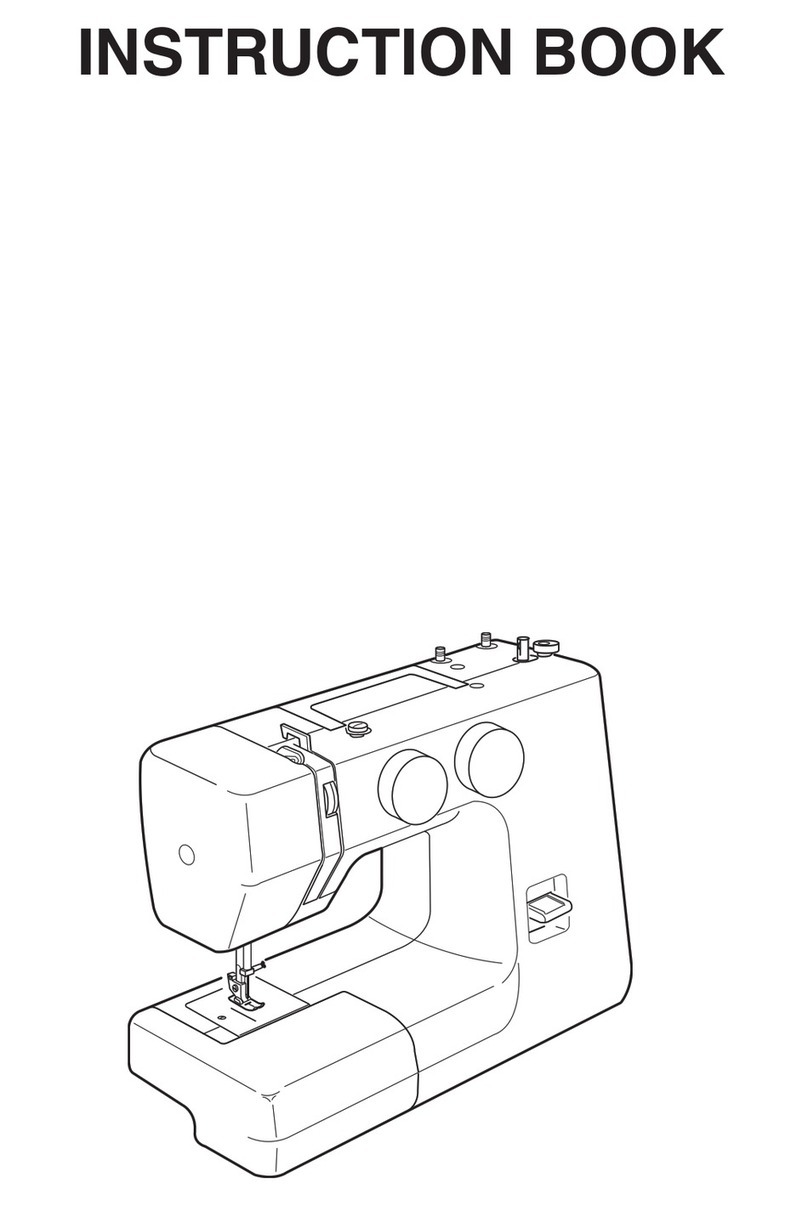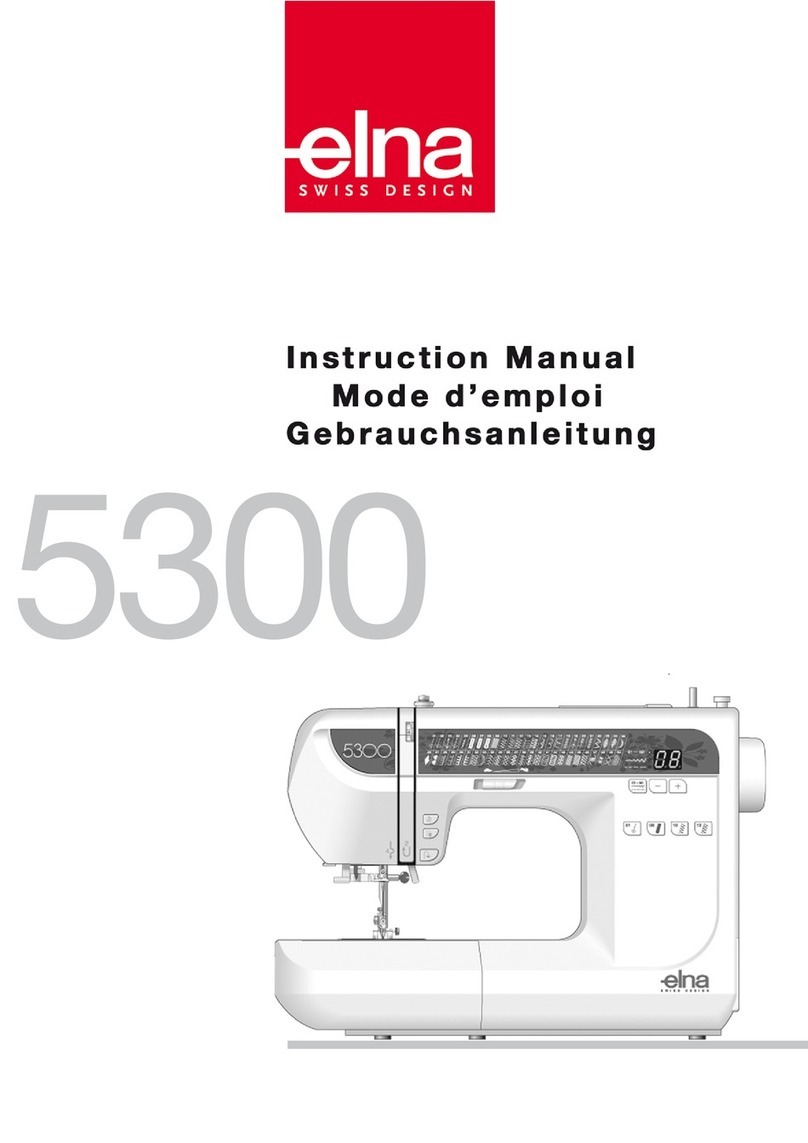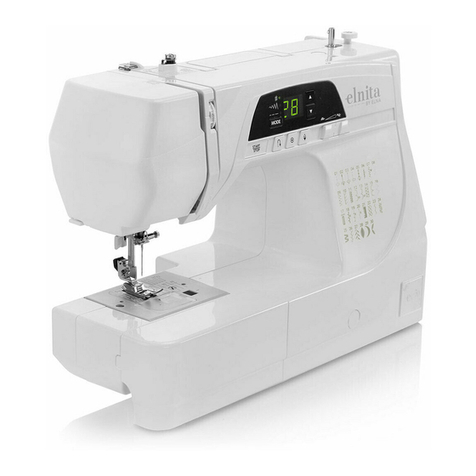
2
TABLE OF CONTENTS
GETTING READY TO SEW
Names of Parts................................................................3
Standard Accessories...................................................4-5
Extra Wide Table .............................................................6
Anti-slipping sticker (for Embroidery hoop RE36b)..........6
Connecting the Power Supply .........................................7
Machine Operating Buttons.............................................7
Raising and Lowering the Presser Foot ..........................8
Common Keys.................................................................8
Setting the Spool of Thread............................................. 9
Extra spool pin............................................................... 9
Winding the Bobbin .................................................... 9-11
Removing the bobbin ....................................................9
Winding the bobbin...................................................... 10
Inserting the bobbin..................................................... 11
Threading the Machine..................................................12
Built-in Needle Threader................................................13
Replacing Needles ........................................................14
Fabric and Needle Chart ...............................................14
On-screen Help .............................................................15
Removing and Attaching the Embroidery Foot..............16
Bobbin Holder for Embroidery (high tension) ................17
Embroidery Hoops.........................................................17
Stabilizers......................................................................18
Types of the stabilizers................................................ 18
Setting the Fabric in an Embroidery Hoop................19-21
When using hoop SQ14b, SQ20b or hoop RE20b......19
When using hoop RE36b .......................................20-21
Attaching the Embroidery Hoop to the Machine............ 22
Thread Holder................................................................23
Selecting Built-in Embroidery Designs .....................23-24
Design category ..........................................................23
Selecting the design by hoop size...............................24
Monogramming..............................................................24
Function Keys................................................................25
Programming a Monogram.......................................26-27
Color change ...............................................................26
Monogram placement.................................................. 26
2-Letter monogram......................................................27
Editing a Monogram ......................................................28
Ready to Sew Window .............................................29-34
Function keys ..............................................................29
Pattern information ......................................................29
Stitch back/forward keys .............................................30
Jump key .....................................................................30
Cross mark ..................................................................30
Color section key.........................................................30
Trace key.....................................................................31
Thread color/Jog key...................................................31
Fine position/angle adjustment key ............................. 32
Rotating a design ........................................................32
Moving a design ..........................................................32
Color list key................................................................33
Adjust key....................................................................33
Auto thread tension level........................................... 33
Cutting the tails of jump threads................................ 33
Hoop back key.............................................................34
Starting to Sew Embroidery...........................................35
Editing Mode.............................................................36-46
Selecting a hoop size ..................................................36
Opening the embroidery designs ................................36
Editing tool bar information.......................................... 37
Selecting a pattern ......................................................37
Moving a pattern..........................................................37
Duplicating a pattern ...................................................38
Deleting a pattern ........................................................ 38
Resizing a pattern .......................................................38
Rotating a pattern........................................................39
Flipping a pattern.........................................................39
Monogramming in an arc............................................. 40
Grouping patterns........................................................41
Customizing the display colors....................................42
Color grouping.............................................................43
Sewing order ...............................................................44
Center positioning .......................................................44
Creating a square frame.............................................. 45
Single color sewing .....................................................45
Zooming in the editing window .................................... 46
Pantry Designs for Applique .....................................47-48
Alternative method ......................................................48
Celebration Designs ......................................................49
Bracelet Designs ...........................................................50
Stuffed Doll Designs.................................................50-51
Applique....................................................................52-53
CUSTOMIZING MACHINE SETTINGS
Machine Setting Mode...................................................54
Registering the custom settings ..................................54
Common Setting Mode.............................................55-57
CUSTOMIZING EMBROIDERY MODE
SETTINGS
Embroidery Mode Settings .......................................57-60
Language Selection Mode............................................. 60
Saving and Opening a File .......................................61-63
Creating a new folder ..................................................61
Deleting a le or folder ................................................62
Opening a le ..............................................................62
Changing a name of the le or folder ..........................63
Direct PC-Link ...............................................................63
CARE AND MAINTENANCE
Cleaning the Hook Area.................................................64
Cleaning the Thread Path..............................................65
Oiling the Machine....................................................66-70
Problems and Warning Signals .....................................71
Troubleshooting............................................................. 72
DESIGN CHART
Embroidery ...............................................................73-80

